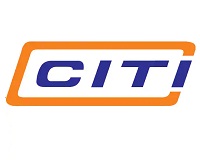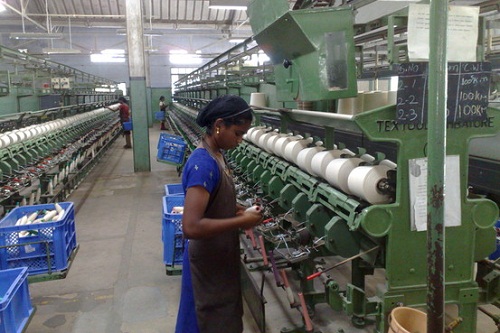 The Confederation of Indian Textile Industry states, India’s textile and clothing exports declined from $38.6 billion in 2014 to $37.1 billion in 2018 while imports increased from $ 5.8 billion to $ 7.3 billion. To arrest the decline in exports and boost employment in rural areas, CITI released a white paper that offers general and sector specific suggestions to the Indian textile and clothing industry.
The Confederation of Indian Textile Industry states, India’s textile and clothing exports declined from $38.6 billion in 2014 to $37.1 billion in 2018 while imports increased from $ 5.8 billion to $ 7.3 billion. To arrest the decline in exports and boost employment in rural areas, CITI released a white paper that offers general and sector specific suggestions to the Indian textile and clothing industry.
It recommends the government should classify the Indian textile industry under MNREGA. Prioritize the National Skill Development Mission to increase employment levels from 85 lakh to 1 crore by 2020. It should also make ESI type scheme available to the unorganized sector on contribution basis.
Other recommendations include
• Creating an advisory body to provide industry specific expertise for more workable policies; impose rule of origin on apparel exports from Bangladesh and yarn/fabric forward rule to allow duty free imports of garments manufactured from yarn/fabric either sourced from India or manufactured in Bangladesh.
and yarn/fabric forward rule to allow duty free imports of garments manufactured from yarn/fabric either sourced from India or manufactured in Bangladesh.
• Address Petrapole/Benapole port issues for Bangladesh imports.
• Expedite refund of export refunds including Duty Drawback, MEIS, RoSL/RoSTCL.
• Simplify TUFS guidelines and clear all the pending subsidies in a time bound manner
• Extend loan moratorium for two years.
• Extend remission of duties and taxes under the proposed RoDTEP scheme for the entire textile value chain.
• Extend 5 per cent interest subvention scheme for the textile and clothing export products including all types of spun yarn.
• Update the export general manifest (EGM) in the ICEGATE.
Focus on cotton fiber sector
• Launch TMC-II (Technology Mission on Cotton) at the earliest.
• Define the role of Cotton Corporation of India (CCI) and ensure industry participation at board level.
• Follow satellite imaging and similar technology enabled practices to estimate the crop size of India.
• Introduce Direct Benefit Transfer (DBT) to cotton farmers
• Enable CCI to sell the MSP procured cotton at international prices
• Extend the benefits of RoSL and MEIS for the cotton fibre.
• Subsidize cotton farming techniques like mulching films and drip irrigation
• Standardize cotton bale packing and adopt bale identification systems like the US and China.
• Global Cotton Contract should be launched on Future Exchanges in India.
Suggestions for Man-Made Fiber sector
• Announce a National Fiber Policy for all stakeholders and ensure adequate availability of quality raw materials at an international price
• Remove all anti-dumping duties on basic MMF textile raw materials including synthetic fibers and filaments
• Slot the entire MMF textile value chain under 5 per cent GST rate on par with cotton textile value chain
• Increase import duty on MMF spun yarn from to 10 per cent to prevent goods from Indonesia and Vietnam from being cleared at zero duty with SAFTA certificate.
Garments and made-ups
• Negotiate FTAs with developed and large markets like EU, US, Australia, Canada, Britain, etc. to ensure level playing against competitors like Bangladesh, Vietnam, Cambodia, Pakistan, Sri Lanka, etc.
• Provide special package for decentralized nature of labor – like ESI.
• Encourage exports of branded apparels from India.
• Increase the threshold limit on apparel sale with 5 per cent GST to Rs 1,500. Prevent cheap imports of readymade garments from Bangladesh and used cloths from other countries.












